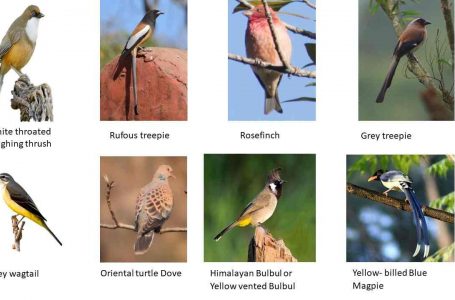Top 10 Natural Disasters of India
The floods of June 2013 in Uttarakhand have refreshed memories of many such calamities that have ravaged life in India over the years. Time and again, the Indian subcontinent has had to face such natural disasters that have destroyed life and property to a large extent. Here are some of the worst catastrophes that Indians have faced so far:
Deccan Famine (1630 -1632)
The failure of three consecutive crops led to the Deccan famine that ravaged the land for two years. It was during the reign of Emperor Shah Jahan that the famine caused destruction at an extremely large scale. Although the Emperor contributed generously to take the situation in control, the famine took the lives of 20 lakh Indians.
Calcutta Cyclone (1737)
One of the worst cyclones in the history of India, hit the city of Calcutta in October 1737. Strong hurricane winds accompanied by earthquakes and floods claimed the lives of as many as 3,00,000 persons. The fatalities happened in the city of Kolkata and the coastal villages that are now in Bangladesh. It has also been proven that flooding was also a major contributor in increasing the number of fatalities. As many as 20,000 ships were destroyed by the cyclone.
Bengal Famine (1769-1777)
Bengal was under the control of the British Empire when the famine hit in 1737. Crops failed for two consecutive years and the next year brought with it a severe drought, which led to a severe shortage of food. The famine affected the nearby states of Bihar and Orissa too. Furthermore, British law forced the farmers to cultivate opium and prohibited hoarding of rice because of which millions lost their lives in the famine. As many as 1 crore people died due to the Bengal Famine.
Coringa Cyclone (1839)
A 40-feet storm ravaged the ancient coastal city Coringa of Andhra Pradesh. It was in November 1839 that a furious storm and cyclone hit the city destroying the settlement and 25,000 vessels and killing 3,00,000 people. The city was known for ship building and repairing and had served as an important trading port.
Third Plague Pandemic(1855)
The plague that originated in China in 1855, entered the Indian land in 1894. High fever, delirium, swollen glands and ultimately death claimed those who had been affected by the disease. Initially the disease was reported from port cities such as Mumbai, Kolkata, Pune, Karachi etc but in 1900 Chennai came under its fold. Over the next 30 years, the plague had claimed the lives of 1.2 crore Indians.
The Great Famine (1876 to 1878)
This was one of the deadliest famines that took the lives of millions. This famine which continued for a period of two years mostly affected people in South India. It gradually spread to South Western and Central India and covered a total area of 6,70,000 sq. Km.
Bengal Famine (1943)
As many as 15 to 40 lakh people were killed in the Bengal famine of 1943. Although Bengal had experienced severe famines earlier too, this one had the most severe repercussions. A major part of the rice in Bengal came from the exports that Burma sent to India. After Japan occupied Burma, the exports became nil. People began to save up all money on cash and limited spending on luxuries such as artisans. A majority of deaths were reported from the artisan group.
Latur Earthquake (1993)
The earthquake measured 6.4 on the Richter scale and took the lives of more than 20,000 people. Latur district in Maharashtra had to bear three more aftershocks on the same day, which destroyed as many as 2,00,000 homes in thirteen nearby districts. As many as 1,27,000 families had to bear losses due to the earthquake.
Gujarat Earthquake (2001)
The Gujarat earthquake was one of the horrendous disasters that struck the Indian subcontinent on January 26, 2001. The earthquake measured 7.7 on the Richter scale and caused large scale destruction to life and property. As many as 20,000 people lost their lives, 1,67,000 were severely injured and 6,00,000 persons were left homeless. The city nearest to the epicentre of the earthquake, Bhuj, was completely destroyed in the earthquake.
Indian Ocean Tsunami (2004)
The Indian Ocean tsunami was a natural calamity that triggered panic and concern nationally and internationally. The disaster was triggered by an earthquake in Indonesia. The earthquake measured 9.0 on the Richter scale and resulted in the disastrous tsunami which ravaged the coastal belt of Kerala and destroyed life and property severely in the Andaman and Nicobar Islands. As many as 10,136 persons lost their lives, 5,832 persons went missing and several lakhs lost their homes.





